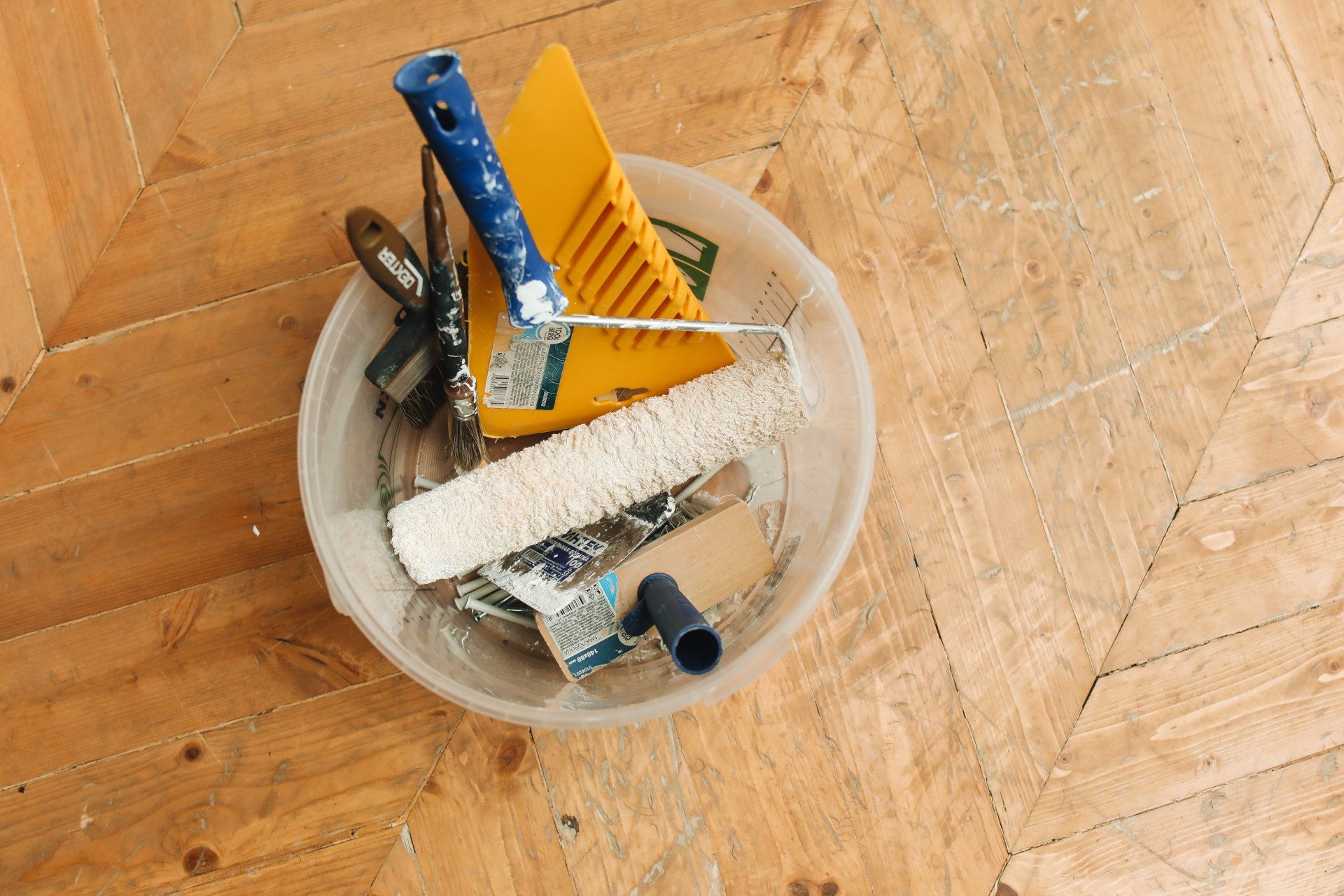BLOG
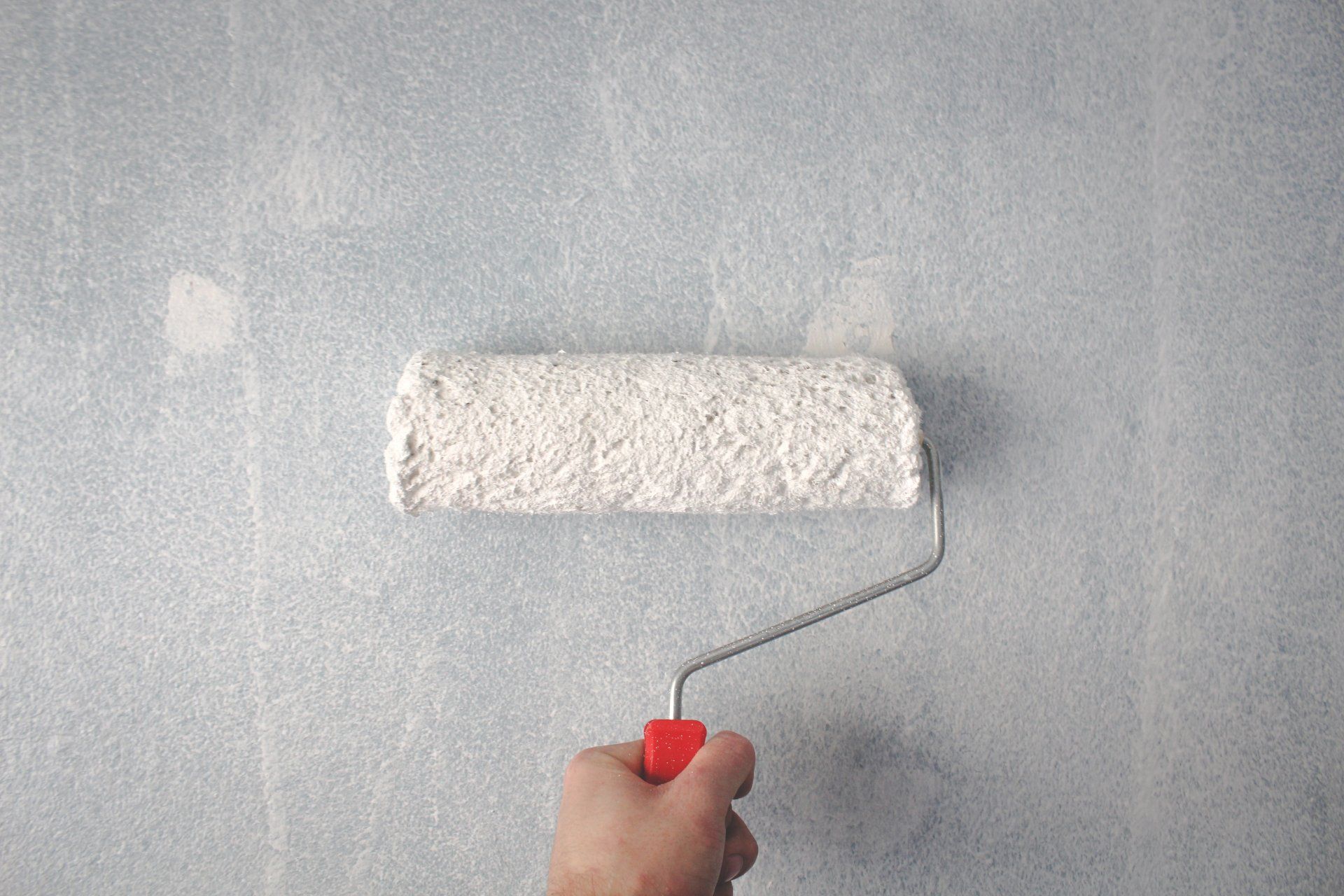
Repainting your interior walls is a low-cost home improvement option. It makes your home in Edmonton easy to clean, covers stains, removes unsightly marks, and generally makes your home cozier. But for how long? The consensus is to repaint your interior walls every three to five years. Some walls may need to be repainted sooner, though. The kitchen, for example, is one of the busiest rooms in the house. All that moisture, heat, smoke, and oily smudges on walls take their toll. If you have recently remodelled or repaired part of your house, you may also be forced to repaint your walls earlier than planned. Depending on your family’s lifestyle and the age of your children, your interior walls may also demand a refresh sooner than envisaged. How Do You Know It’s Time to Repaint Your Walls? We have already addressed the question of how often you should repaint your home’s exterior walls . Since interior walls work just as hard (or harder), it’s important they don’t go too long without a fresh coat of paint. But how do you know it’s time to repaint? A well-lived house has a certain charm. It also feels more inviting to guests. But not when it is cluttered and falling apart, with walls defaced by oily fingerprints and dents. Rooms that look stale and tired need an uplift for the home to look its best. As we have said, some rooms need more regular repainting than others. So let’s break this down by room. The Hallway and Stairwell The hallway and stairwell see a lot of traffic as people come and go, and go and up and down the stairs. As too often people can’t resist touching the walls, either for balance and as they bring in luggage and other stuff from outside, these areas of the house will show signs of wear and tear a lot sooner than the rest of the house. Contact with the wall is hard to avoid, especially in the hallway because it is such a narrow space. If the rest of the interior walls still look good, a fresh coat of paint on the hallway and stairwell walls will immediately enhance the space. Repainting these areas once every 2 to 4 years should keep them fairly blemish-free. The Living Room This is typically the room you spend most of your family time. It is more likely also the largest room in your home and one you want to look fresher than most as that’s where you host and entertain your guests as well. Living rooms are typically well-furnished, which minimizes any contact with the walls, so the paint survives longer than it does in other rooms. But if your area receives a lot of sunshine and you have large windows that you like to keep open during the day, there is going to be some sun bleaching to account for on your walls. Another factor you want to remember is the quality of paint you use for this room. If the paint has a more robust quality, it will not fade too quickly and, as a result, won’t need frequent repainting. A fresh coat of paint every 5 to 7 years is generally agreed to be a good repainting schedule for living rooms. The dining room may not see as much activity as the living room but the rooms are usually separated by an empty space, meaning the difference in freshness will be noticeable from either room. We would advise maintaining the same repainting schedule for both the living and dining rooms. The Kitchen The most important and likely the most frequented room in your home! Either preparing meals, grabbing a quick snack, or washing dishes, the kitchen is a hard room to stay out of. It is during the meal preparation time that the kitchen walls will suffer the heaviest toll. Steam from simmering meals, heat from the stove and oven, and all manner of messes from spilt dishes to sticky fingerprints will have your kitchen walls looking too ‘lived-in’ for your taste. Besides the not-so-fresh-looking walls, all that daily cooking means the kitchen will start to smell distinctively different from the rest of the house. That’s to be expected, but as the meal count grows the odour gets more pungent and harder to ignore. Aside from using more hard-wearing paint, you should look to repaint your kitchen walls more frequently than you do your living and dining rooms. Every three to four years is a good schedule to maintain. The Bathroom Moisture can do a lot of damage to paint. It can cause paint to bubble, flake, and peel, which is not the look you want for your bathrooms. Compared to the rest of Canada, Edmonton has a fairly dry climate. But as you can’t prevent heat in the kitchen, you can’t keep your bathroom completely dry all the time. And being a room that sees daily use, there is going to fairly noticeable stress on the walls not very long after you have repainted. You can avoid repainting your bathroom walls too frequently by keeping them dry. Ensuring there is enough outside air and sunlight filtering into the room will help. It will also prevent musty odours from building up. When repainting, which should be every three to four years, choose a specially formulated bathroom paint that can stand up to the wet conditions. Aim for the same repainting schedule for your laundry room, which is another room where moisture buildup is a concern. Bedrooms Private to every member of the family, bedrooms can seem detached from the rest of the house. There is also less pressure to update these rooms to look as fresh as possible. Adults typically spend less time in their bedrooms, so the wall paint doesn’t suffer as much abuse. It is a different story altogether for the younger members of the family. Children’s bedrooms too often also serve as auxiliary playrooms. So it’s not uncommon to find your toddler practising their drawing skills on their bedroom walls. Not sure about yours, but when most toddlers suddenly go quiet as if their attention has been taken by something, it usually means there is going to a mess to clean up. You may be forced to repaint your children’s bedroom every two or so years, but for the rest of the bedrooms, three to four years is a good schedule. For your children’s bedrooms, choose eggshell or satin sheen paints that make it easier to scrub down any wall art by your toddler. How Often You Should Repaint Your Ceilings? In terms of repainting frequency, ceilings are treated separately from the rest of the house. But you may also have to separate the ceilings by room as your kitchen ceiling is exposed to different conditions than your living room, for example. Other than the normal colour fading, you may be forced to repaint your ceilings sooner than expected to cover stains caused by leaky roofs. Save perhaps for the kitchen and bathrooms where you can paint the ceiling the same time you paint the walls, your ceilings can last for up to 10 years before it starts to yellow. As you repaint your interior walls, take particular care with the trim. The baseboards in high traffic areas like the hallway, stairwell, and kitchen take a lot of dings and dents. You will need to repaint them every two or so years to prevent the house from looking aged and beat up. Regular Interior Painting is a Cost-Effective Interior Design Tool The good thing about interior painting is you don’t have to paint the whole house at the same time. Sometimes it’s just the trim you need to touch up. This makes it a more approachable way to fresh up your Edmonton home and improve the ambience inside. To get a professional-looking finish and avoid messes that ruin your furniture and floors, you may be best served hiring a professional interior painting contractor. MB Painting is a trusted and experienced residential and commercial painting contractor in Edmonton, AB. Contact us here to discuss your next painting project.
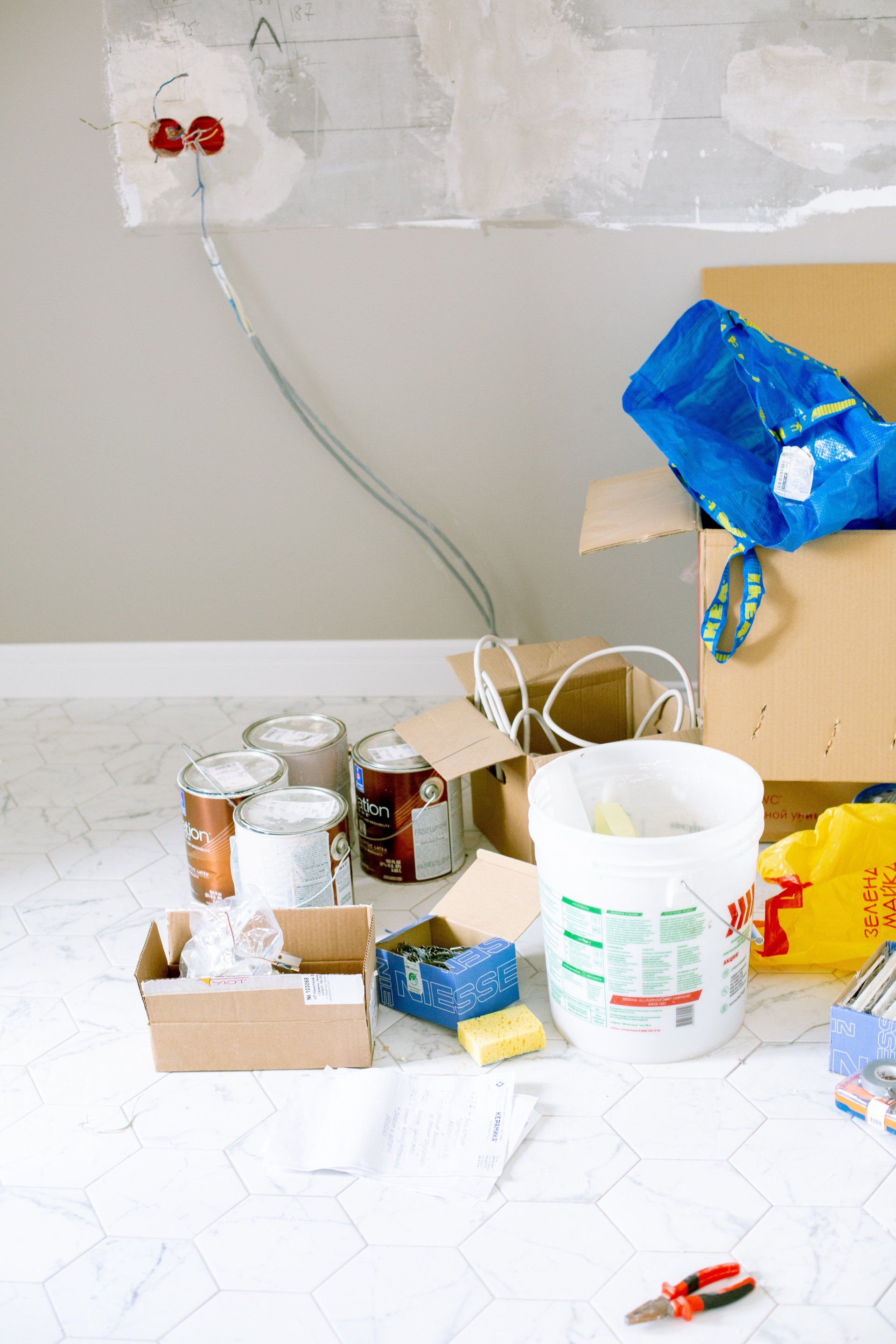
Painting is one of the easiest and cost-effective ways of bringing change to your house in Edmonton. Do you have a new color in mind or you simply want to give your interiors a fresh breath? The most challenging part is finding an experienced and reliable painter. You can do the painting yourself, but it’s always advisable to hire a professional painting contractor. There are multiple benefits of hiring a professional to get your job done. This article dives deeper into the benefits of hiring an interior painting contractor in Edmonton and the surrounding area. Professional Services that Guarantee Quality Results As much as any person can paint, there is much to the interior painting expertise than simply taking a brush and paint. The objective is not to modify the color of your house but to add value and improve its resale value. It doesn’t matter whether you plan to resell your property or not; you need quality and professional painting services. A professional interior painting contractor will offer you quality services and ensure your property is looking fantastic again. Minimal Stress Seeking the services of an interior painting contractor relieves procurement and supervision stress. Contractors plan well before embarking on any project. Most contractors have insurance and expertise to guarantee quality services. If anything goes wrong with the project, the contractor can make it right since they are insured. This gives you peace of mind to concentrate on your career or business. If you DIY, you may still want to hire a painting contractor later on to rectify the mistakes you made earlier. Thus, it is economical to hire a professional contractor and get your project done within the set time frame and without defects. Enhancing the Structural Stability of Your Property A commercial interior painting contractor can detect decay or rot in your property. Minor weaknesses can significantly affect your house in the long run. The contractor will conduct a thorough inspection and advise you to fix all structural defects before painting your house. Water vapors may enter the walls via structural flaws and cause molds to grow. Quality painting services can protect your house against water vapors. A painting contractor can further recommend reliable building constructors to fix the structural issues they can’t handle. Timely Completion An interior painting contractor comprises a professional team that will complete your project within the set time frame. Timely completion will allow you to do other things such as decorations, designs, and others. If you do it yourself, it may take several weeks to months to complete a simple task. You simply need to agree with your contractor about the project deadline. Some slight delays may arise from significant repairs like decay or if you have another ongoing home improvement project. Nonetheless, most painting contractors meet strict deadlines to allow homeowners to resume their everyday life. Familiar with New Patterns and Colors Hiring an interior painting contractor is a good opportunity to select new colors or patterns for your Edmonton home. The experience is amazing and brings a fresh breath to your old faded walls. An interior painting contractor can advise and recommend appropriate colors for your property. Most contractors have specialized in coloring schemes and low-cost alternatives. Contractors leverage back priming or back rolling appropriately since interior painting calls for craftsmanship. They also use high-quality paints that affect your house’s ability to withstand UV rays and extreme weather conditions. Safety Interior painting contractors invest heavily in training, modern tools, safety equipment, and certifications. This guarantees that they deliver their services cautiously and accident-free. They are equipped with drop cloths, ladders, painter’s tape, and bucket, and other crucial accessories for the work. MB Painting Contractor has a team of professional, reliable, and qualified painters who are CSCS certified. With more than 35 years of experience in the industry, we have the knowledge and technical prowess in handling any project size. Submit a request for a free quote with our contact us page to send us your painting requirements. We will respond to your request as soon as possible.
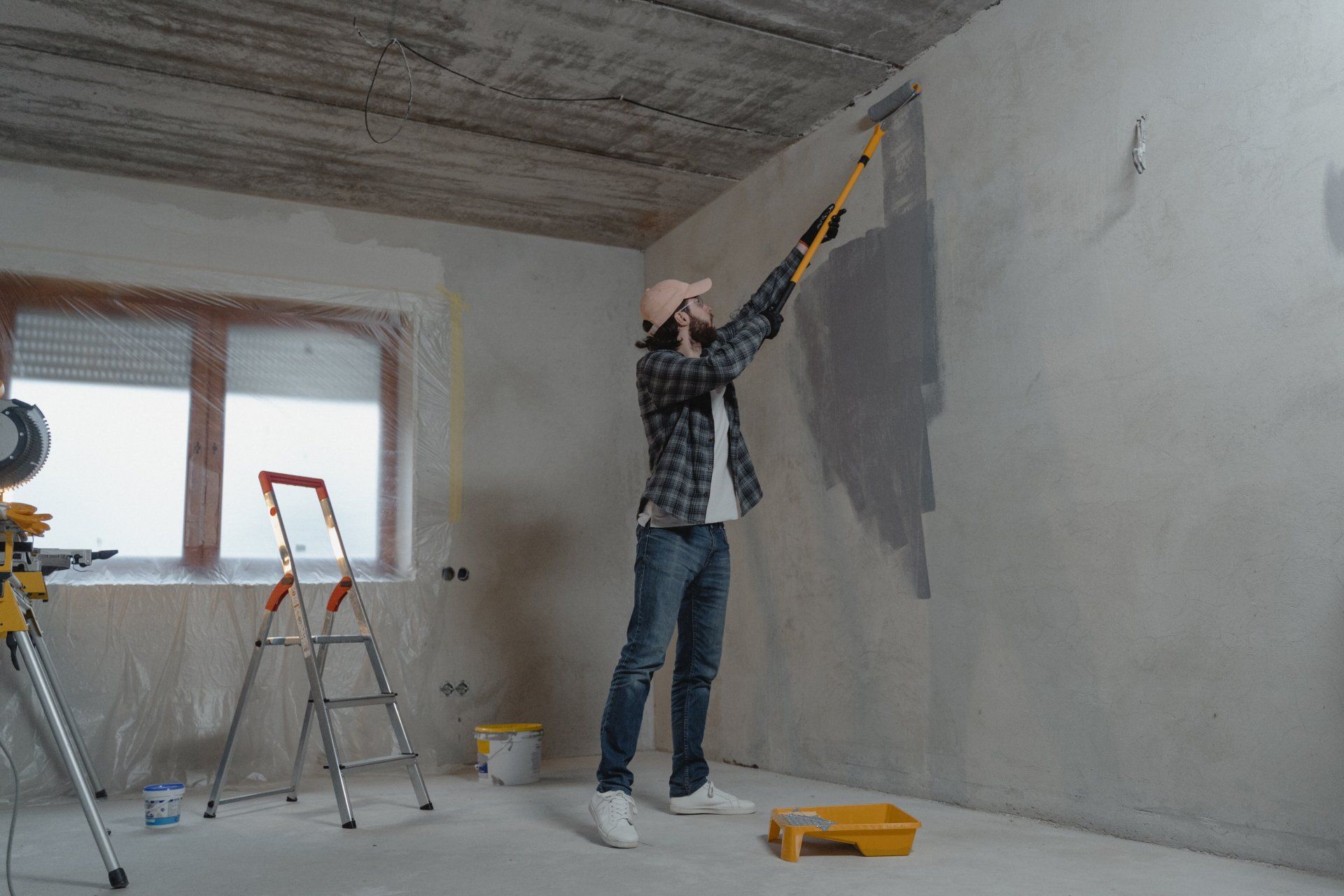
A fresh coat of paint can turn the oldest, soulless house from bleak to chic. But is the result as predictably pleasing when you do the painting yourself? Before you take it on, a DIY house painting job seems a very approachable project. And this year in particular, with finances being tight because of the Covid-19 pandemic, we are all looking for home improvement projects we can do ourselves to save money. What’s true, though, is that a DIY paint job is anything but easy. It is quite easy to get less than impressive results. But we are not about to let that happen. Call it a house painting contractors’ code, but we want every freshly painted house to look totally transformed, in the right way – whether it’s us or you doing the painting. To turn your DIY paint job from an okay result to ‘my friend from the book club really has to see this’, we have compiled the following professional painting tips and tricks: Tips and Tricks for a Professional- Looking To DIY House Painting Job 1. Choose the Right Paint Brushes A bad painter blames his brushes. Well, maybe that’s not the exact quote, but the meaning is the same. Any job starts with the right tools, without which the result is predictably poor, and the work itself ponderous. For a house painter, your tool of the trade is the paintbrush. A pro tip is to avoid the old brushes from your last paint job. As old paintbrushes are often worn and firm, they leave marks and troughs that will be hard to level out. Those brushes are also difficult to handle, which means your paint won’t spread as smoothly across the surface. The same applies for your roller brushes. Buy new ones, and make sure they have the right thickness. If too thin, the brush will not reach into crevices on rough plastered walls, which means generally poor paint coverage. Roller brush covers that are too thick will give you an exaggerated texture on smooth walls. Again that may not be the finish you are looking for. Be sure to invest in a good quality painter’s tape to make your cut lines straight. Also, get a good roller extension pole to make it easy to paint those tough-to-reach areas. The pole makes the job less strenuous on the body too. 2. Prepare Your Surfaces Well A professional painter’s job is already some way done by the time they start the actual painting. They know the end result relies heavily on a well-prepared surface, as a pre-primed heavy linen canvas is to an oil painting. If you are repainting an old house with flaky, peeling paint, you have got to remove that old paint first. Only after the surface is smooth to the touch should you move to the actual painting. As you may need to sand, fill holes and dints, and caulk, budget enough time for the prep. In older previously painted homes, prep can consume the bulk of the project time, and that’s OK because what matters is the end result. Even with all their experience, a pro painter will not discount the importance of tape. They will tightly tape off all the trim and baseboards. They know that painting is a messy job, that despite all the care you may take, there will always be paint that drips where it shouldn’t. 3. Invest in the Right Quality Paint Pro painters know what to look for in a ‘quality’ paint, which mostly isn’t the paint’s coverage. They will tell you most cheap paints cover well because they have higher chalk concentration than resin. Yet the resin is what makes a durable paint. The thing with paint is that the solvents, which help the paint to spread, will evaporate as the paint dries. The actual solids – the resins and pigment are what will remain. So if the paint is thin on resins, which is what binds the pigment particles together, that protective film that will remain on your wall after the paint dries is not going to be as tough and will chalk before long. As it is often hard for DIYers to tell good paint from the poor stuff from looking at it, choose the premium, more expensive paint as it will last the longest and give you a more pleasing finish. 4. Protect Floors and Furniture From Paint Spills and Splashes The messes are what separates truly professional, experienced painters from DIYers. Pro painters know paint will always drip and splash about. So they take their time covering all the furniture and floors, making sure to tape off window panels and where the floor meets the wall. Just know that it is easier to cover areas you don’t want to be painted than it is to clean off paint spills and splashes. 5. Choose the Right Weather to Paint In The weather affects how long your paint takes to dry between coats. Unless you have chosen quick-drying paints specifically because you envisage that the weather isn’t going to be warm enough, wait for a nice warm day that’s not too hot or windy to paint. You don’t want to be painting in direct sunlight where it’s so hot that the paint dries too fast. The idea behind how paint works is, to fully adhere, it needs time to soak into the substrate before it fully dries. If the paint dries before it has properly soaked in, the consequence is it will not adhere as well as it should. The effect is the same with windy conditions as that too leads to paint drying too fast. 6. Always Warm Your Paint Cold weather causes paint to thicken up and become more viscous, making it more difficult to work with. While some manufacturers supply paint that’s specially formulated for cold conditions, to be sure, always warm your paint before painting. The best way to warm your paint is to place the paint can in a basin of hot water. To make sure it warms evenly, stir the paint while it’s in the hot water bath. If the weather is particularly cold on paint day, it is a good idea to keep the paint can in hot water as you paint to keep it warm. In colder climates, higher relative humidity also tends to be an issue. To avoid the effects of painting over wet surfaces where moist air has condensed on the surface to be painted, aim to paint where the substrate temperature is 3 degrees Celsius above the dew point. Painting over surfaces where there is condensed moisture affects the paint’s ability to adhere. It also causes blistering and blooming when using solvent-based paints. With water-based paints, the wet surface will thin the paint, meaning you will not get as thick a coating as you had budgeted for. 7. Box Your Paint to Keep the Colour Consistent Boxing your paint simply means mixing all the paint into one container. You want to do this as the paint cans may be from different batches where the color and viscosity may be slightly off. Boxing your paint means you will have a consistent color right through your project. It also means the paint covers more consistently and that it gives you a more uniform finish. 8. Know Which Way to Paint From Finally, the paint meets the wall. This is the part you were looking forward to the most. Getting the best result requires getting the basics right, starting with the right way to paint, which is from top to bottom. Start with your edges, first by taping and sealing off the ceiling, door frames, and baseboards. Taking the corners first, slowly drag your brush across the taped line. These are the details you don’t want to rush, so patience is key here. Where you have taped paint lines, don’t wait until the paint has completely dried to take the tape off. Do so before the last coat has dried to avoid the risk of the paint peeling off with the tape. For the rest of the wall, make sure your rollers are saturated with paint but not to the point they are dripping. Having enough paint on the brush means you won’t have to apply too much pressure on your strokes. And don’t roll until the brush has no paint left as that tends to leave streaks and marks on the surface. If you follow the tips we have shared here, your DIY paint job should give you a result you will be very happy with, perhaps enough to turn a pro painter’s head. However, if this now all seem too much work than you had envisaged, it is best to let a professional residential painting contractor take on the job. MB Painting is a professional residential and commercial contractor painting contractor with a growing reputation in the city of Edmonton, AB. Contact us here to discuss your next painting project.
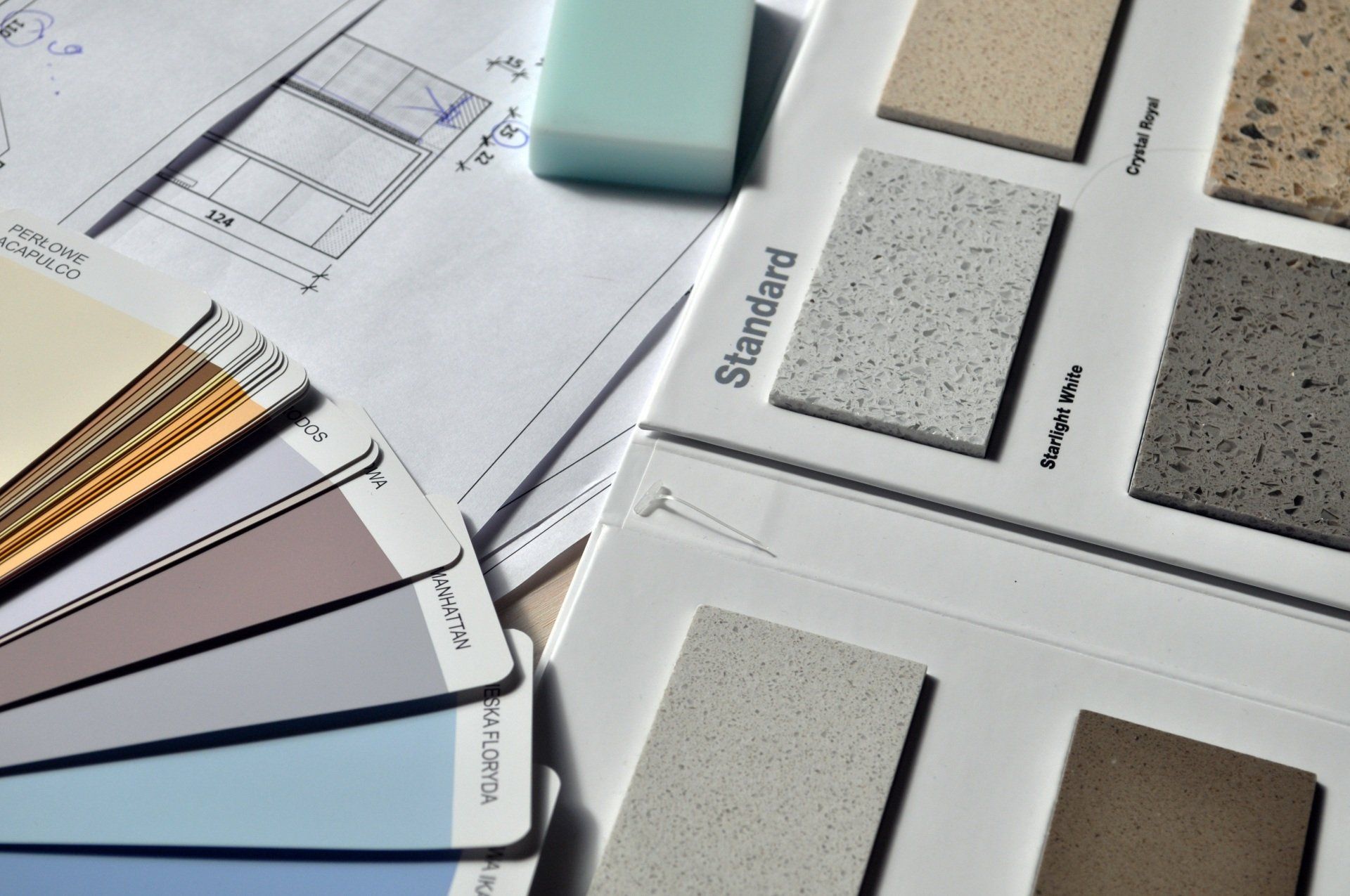
Interior painting is an easy and cost-effective way to give your house a breath of fresh air and make it more valuable if you plan to sell it. In the modern open-plan houses, where kitchens, living rooms, and dining rooms are a single ample space, colour defines interiors and forms focal points in pretty featureless rooms. The challenging part, of course, is choosing your interior paint colour for use and where to put them. Learn how to choose your interior paint colour in this post. How to Choose Your Interior Paint Colours Create a Colour Scheme that Aligns with Your Home’s Furniture In today’s interior painting world, where you can purchase various colours below $20 per gallon, it is vital to consider the advice of architectural colour designer Bonnie Krims. “Always remember that while there are thousands of paint chips at the store, there are only seven colours in the paint spectrum – red, orange, yellow, green, blue, indigo, and violet. I always suggest eliminating a couple even before you go to the paint store.” Here is Krims’ 4-step method of creating a colour scheme: Begin by choosing three colours from common objects in your home, like furniture, and carry it to the paint store. Choose three sample strips containing those colours, and you will have almost 18 colours to use, as every sample strip usually has six paint colours. Next, select one of the three paint colours as your wall colour and space the other two for furnishings or fabric. Thirdly, select the neighbouring rooms’ colours – choose a different colour from your initial sample strips. Lastly, select a fourth colour that you can use as an accent. 2. Decide on the Finish to Create an Appealing Visual Impact Once you have chosen your colours, think about the finish you will use. While today’s flat paints have high stain resistance, a satin finish is perfect for walls since it is easily scrubbable and rarely draws attention to defects. Semi-gloss and high-gloss finishes were best left to the trim, where they perfectly accent the curves of a molding profile. However, in the modern painting world, you can also apply finishes to generate visual effects on the whole wall. For example, you can paint one wall in a flat finish and the adjacent wall in a semi-gloss, both in the same colour. 3. Match the Colour to Your Favourite Feeling Generally, it would be best to paint your social rooms (dining rooms, kitchens, family, and living rooms) with warm colours, such as coral, cranberry, etc. For individual rooms (home offices, powder rooms, bedrooms), use cooler hues, such as sage-green, violet, etc. Paint your study rooms yellow as it stimulates the brain. Colour your dining room red as it increases appetite and blood pressure. Lastly, paint children’s bedrooms purple as they love it more than any other colour. 4. Know Your Whites There are multiple types of whites. Pure, “clean” whites lack tinted undertones. They are loved by designers striving to showcase their artwork and are often applied on ceilings to form a neutral field overhead. The other ordinary whites are either warm – with yellow, rust, pink, or brownish undertones – or cool, with green, blue, or gray undertones. It will help if you use warmer whites in rooms with inadequate natural light to give bigger spaces a cozier look. Contrary, cool whites help to open up spaces. You should test them simultaneously to see which one suits well with the other room colours. Interior Painting Colour Consultations in Edmonton, AB, Canada In the field of interior painting, one company stands tall, ready to offer you professional consultations you can trust! MB Painting offers superior interior painting services in Edmonton and takes an interest in your home colour choices. Are you ready to commit yourself and give a breath of fresh air to your interior rooms? Ensure you know your options by reaching out to us for professional interior painting consultation and services.
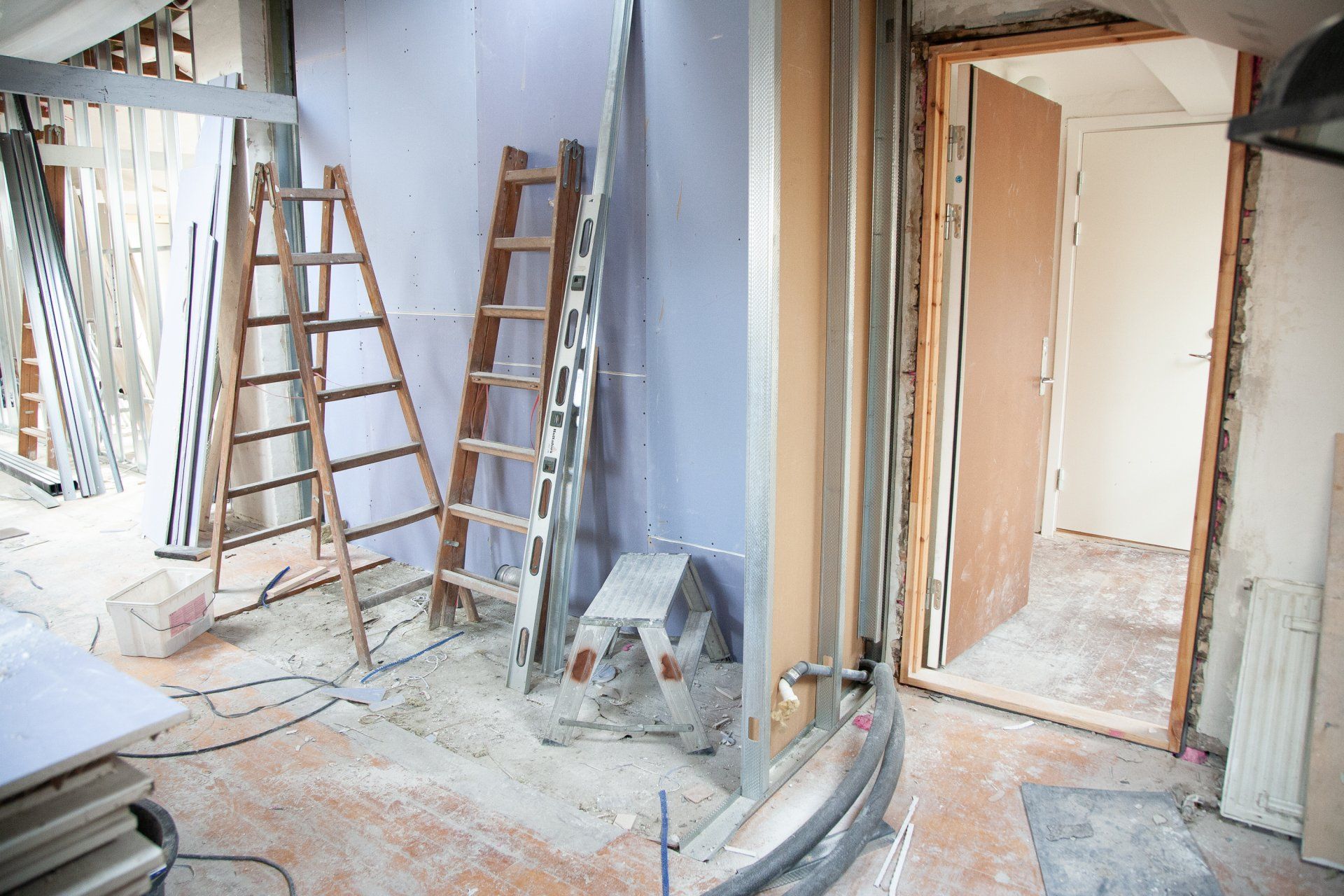
A home is undeniably a great investment and taking good care of it is the best way of protecting and maintaining its value. When environmental factors like; rain, wind, sun, storms, and time have damaged your home’s exteriors, it’s time to consider applying a fresh coat of paint to give them a brand new look. Some homeowners feel that exterior painting is an easy job that they can do themselves, but it is always advisable to consult and seek help from a professional exterior painter. Hiring a professional exterior painter will help you save time and increase the value of your property through quality painting services. Though exterior painting seems to be a simple task, it’s actually a time-consuming and challenging exercise that calls for preparation, knowledge, and attention to detail. You need to do many things correctly, like surface preparation, color selection, and application. This blog contains five things you should consider when hiring exterior home painters in Alberta. Don’t Just Go With the Lowest Bid! Most homeowners fall into the trap of picking the contractor with a minimal bid when searching for an exterior painter. They often forget that you get what you pay for. The best price in most instances is not always the lowest one. Instead, you should concentrate on getting the value of your money. Therefore, hire an exterior painting contractor that provides the best value. Remember, value always outplays cost, especially when hiring exterior home painters here in Alberta. Consider The ‘Minor Things’ Your house’s exterior can be compared to a giant canvas where even minor things matter. After all, the trim surrounding your doors and windows is vital as the exterior walls themselves. You should weigh how the various exterior home painters you are considering handle both the major and minor things. It is the little things that bring a difference to how your property will look after painting. For instance, here at MB Painting, we conduct a ton of prep work before any job, which distinguishes us from our competitors. Observe The Test Paint In Natural Lighting Experts advise that homeowners should observe the test color in natural lighting. You should view the test paint at different times of the day before settling on a particular color. Avoid making decisions after looking at the test color in artificial lighting, as you may end up choosing a color that looks horrible when viewed during day lighting. MB Painting creates a painting proposal that gives you a clear idea of your home after the painting exercise. We will even paint a swatch on the exterior of your home to let you see what the color will appear like in natural light once dried. Ensure You Get Digital Renderings When looking for professional exterior home painters; inquire if they will provide you with a digital rendering of what your house will look like once the exercise is done. The renderings will enable you to know exactly how your property will appear after painting. This will further help you make the right decision about the exterior painting exercise. Professional Exterior Home Painting Services in Alberta Painting the exterior of any home, no matter its size is a demanding and time-consuming activity. Unlike interior painting, it is essential to choose the appropriate color and paint that can withstand harsh environmental conditions, year after year. At MB Painting, we proudly provide quality exterior painting services for homeowners in Alberta. We have a team of professional, reliable & qualified painters who are CSCS certified. With over 35 years of experience in the industry, we have the knowledge and technical prowess in handling any exterior painting project in Alberta. Contact us today to learn more about our services.
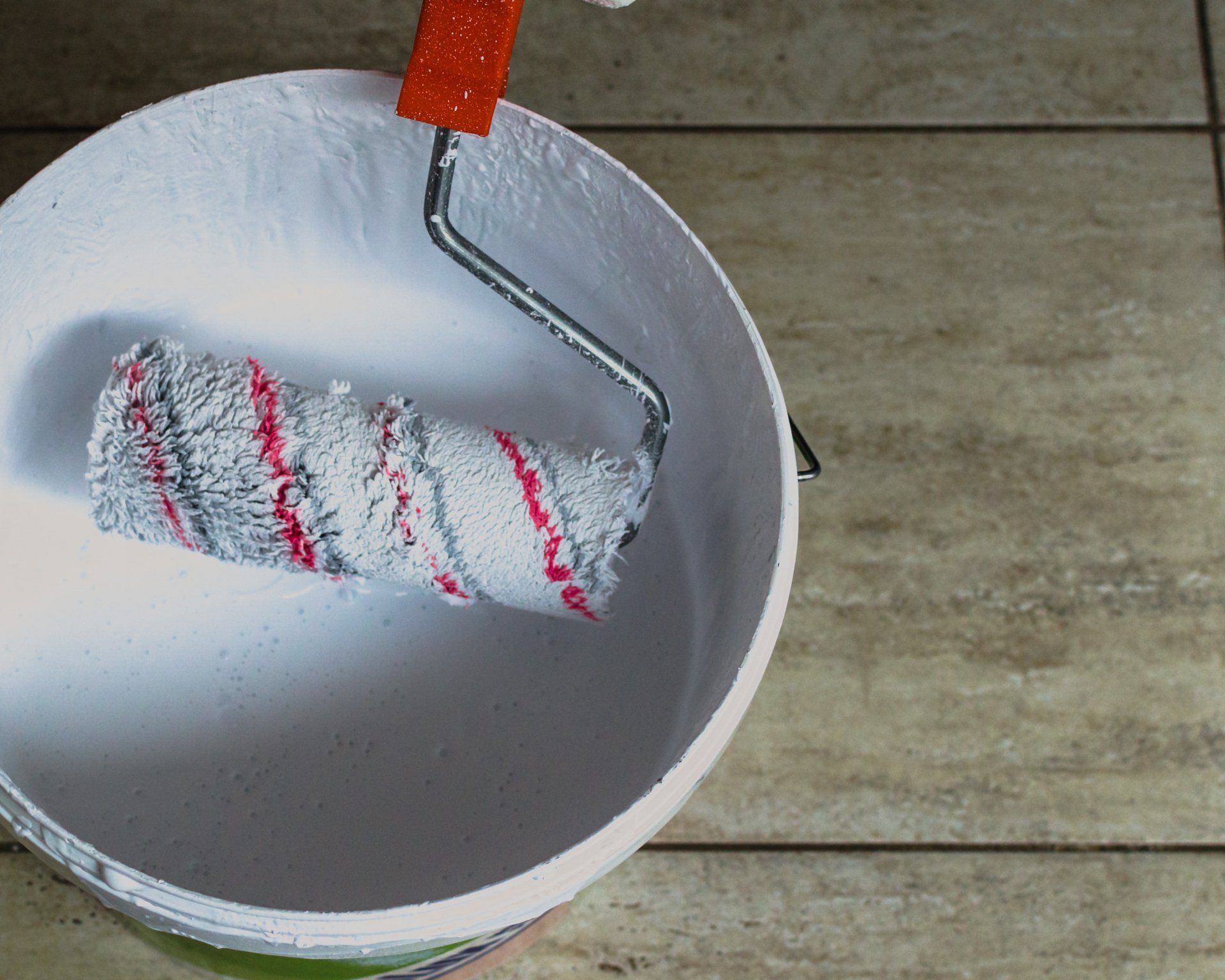
If you are like most people in Edmonton, your home will be your most valuable asset. To preserve its value over time and maintain its curb appeal and structural integrity, you have to protect it from the damaging effects of moisture and UV radiation. The best way to do this is through regular exterior painting. If your house’s exterior shows cracking and peeling paint and you see signs of rot on your wood siding, know that you have waited too long to repaint it. By waiting too long to apply that fresh coat of paint, it also gets harder to prepare the surface for painting. The question then is: How Long Does Paint Last On The Exterior Of A House? The generally agreed timeline for repainting your house’s exterior is 5 to 10 years. But the truth is there is no universal answer to this question. How long a paint job lasts depends on different factors, not least the quality of the previous paint job. Importantly, though, every house is different. Different construction materials have different strengths as well as varying abilities to hold paint. Wood weathers fast and, depending on conditions, may need to be repainted every three years. A solid surface like fiberboard can keep for up to 15 years before it has to be repainted, while a brick wall can last for 20 years before it needs a fresh coat of paint. But what causes exterior paint to fade or deteriorate? The climate and weather have a big part to play in how long exterior painting lasts. Harsher weather, marked by excessive moisture, high humidity, or too much sunlight will mean paint fades or deteriorates faster. High humidity and excessive moisture all have damaging effects on wood siding. If either through cracks in the wood or other forms of damage the wood absorbs moisture. As the wood expands and contracts, the paint starts to crack and peel. Where the air is humid, the moisture will also cause the wood to rot. In Edmonton, our winters are long and brutal. All that moisture means that wood siding in particular will need constant protection with paint. How To Make Sure Exterior Paint Lasts The Longest Climate and weather notwithstanding, how long you have to wait before you repaint your house’s exterior depends on the quality of the previous paint job. Doing the following can prolong that time: Invest In A Good Quality Paint The first point to consider is the type and quality of paint you choose. Acrylic paint does not fade as fast and has better moisture repelling qualities than PVC paint. Even then, opt for the premium quality paint as that is not only easier to work with but produces a better finish too. That said, even the best paint will not last long enough or look as good if poorly applied. What happens before you start painting determines how well the paint adheres and looks after application: Surface Preparation Is Key To A Smart, Lasting Finish Ensure your surfaces are well prepared by treating all spots of mold, replacing sections of rotted wood, filling all holes and cracks in stucco, and sandblasting all cracked and peeled paint. For wooden exteriors, applying a primer first is a good way of ensuring the paint adheres well and produces a pristine finish. You should aim for a surface that’s fairly smooth and dust-free. After scraping or sanding it is a good practice to powerwash the surface to remove all dust. Remember, though, that the surface has to be completely dry before you apply paint. Of course, with exterior painting especially, the more coats you apply the better. Two coats are usually sufficient. But if you are applying a lighter paint colour over a dark one, you may need a third coat to achieve your desired colour. The more coats there are means the paint does not age as fast. Speaking of that, light paint shades generally fade more slowly than intense, rich colours like orange and red. For the actual painting, choose warm days so the paint dries well between coats. If it has rained overnight, it is best to wait a few days for your surface to completely dry. Well Maintained Houses Do Not Need To Be Painted As Frequently Your house’s exterior is exposed to all kinds of wear that it is not enough to paint and then wait 5 years before you give it any attention. For the paint job to last, you have to constantly monitor and inspect for dampness, rot, mold, and insect damage. Repairing these early will minimize overall damage and mean your house maintains its looks for longer. It ensures you don’t have to repaint it as frequently. Good preventive maintenance involves regularly washing off mold before it discolours and weakens the paint. As long as that protective paint film is intact, you can safely powerwash any dirt on your walls and ensure your house’s exterior maintains its looks for longer. Choose A Licensed, Bonded And Insured Exterior Painting Contractor Regularly repainting your house is an excellent way to prevent moisture damage and block out ultraviolet rays that weaken paint and causes it to fade. But what you do during and in-between paint jobs determines how frequently you have to repaint. While repainting your house may seem like the perfect DIY project, you will get the best results by assigning the work to an experienced, licensed, and fully insured exterior painting contractor. This way you get get a predictable result, with a professional paint finish that endures even the toughest conditions. In Edmonton, homeowners trust the exterior painting team at MB Painting. We have worked all across the city and can guarantee a quick and professional exterior painting job. Contact us here to discuss your project.
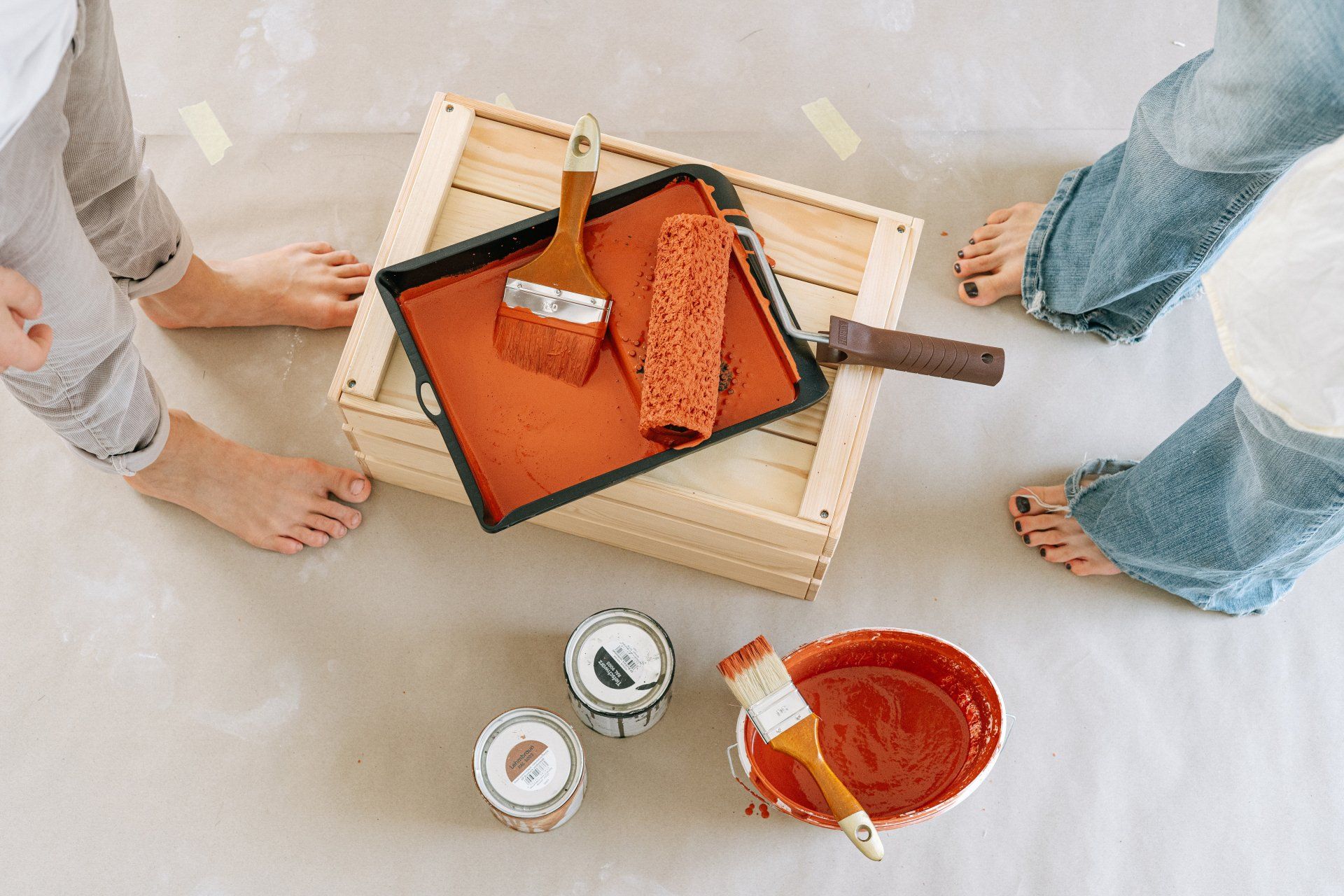
We generally paint our houses to make them look better. But while a fresh coat of paint can dramatically alter the ambience of your house in Edmonton, there are more practical reasons for painting your interior walls. If you are mulling over the decision to repaint your house’s interior walls, in this article we will give you the reasons why that is a worthwhile home improvement project. 10 Reasons Why You Should Paint Your Interior Walls There are both practical and aesthetic benefits of painting your house’s interior. Some of these benefits can be expressed in dollar terms. Let’s discuss them in detail: 1. Protects your walls The primary purpose of paint is to protect. Paint protects whatever surface it is applied on. If it is a farming implement, car, or any metal object exposed to the elements, paint protects against corrosion. For wood, paint protects against rot caused by moisture. So it is with your house’s interior walls. Paint seals to repel moisture and prevent the plaster from crumbling. When an unpainted plastered wall absorbs moisture, typically from condensed indoor air, soluble salts in the plaster rises to the surface. This weakens your walls. Painting your interior walls with good paint seals them and stops them from wearing off. With drywall, excessive moisture absorption can even compromise the structural integrity of the whole house. Whether it’s your interior walls, doors, or trim, paint controls wear and tear and protects your house’s looks and structural integrity. 2. Repels dust and dirt Not only are painted walls easy to wipe down and clean, but they also repel dirt and dust. It is much easier for dust and dirt to adhere to rough plaster than painted walls. If you have to dust and clean your interior walls, it is much easier to do if they are painted. It takes a lot of elbow grease to clean plaster. In fact, it is almost impossible to do it without scratching the walls. If the surface is painted with smooth, glossy paint, you would simply wipe it down with a wet cloth and detergent. 3. The easiest way to clean a dirty, neglected house There is only so much you can accomplish trying to clean a house that has been neglected for years. Greasy, stained walls can prove too much work if they extend from the garage through the living room to the kitchen. For your sanity and to truly enjoy your place to its full potential, you are better off just painting those interior walls afresh. The added benefit is you get to paint the house your own preferred colour scheme. Note, however, that if the walls are greasy, you will have to apply a deglosser first so the fresh paint can easily adhere to the surface. 4. Hides wall imperfections A poor plaster job may produce wall imperfections that are hard to ignore. There may also be scratches, hairline cracks, and other damage that diminish the appearance of your interior walls. Painting is usually an effective fix for such flaws. There are high build textured paints that can conceal cracks and scratches in plaster. This paint comes in a variety of formulations and can be applied in different ways depending on the severity of the flaw. Textured paints have a self-levelling formula and thick consistency that fills cracks and other imperfections to produce an even painted finish. 5. Improves the ambience of your rooms Colour has the ability to transform the mood of a room. If it’s a new house, paint helps you set the right mood for each room in your house. This is why a common interior decor tip is to never paint your whole house the same colour. It is obviously a good idea to choose the colours you love for your interior walls. But a more practical approach is to base your choice of interior colours on the function and purpose of each room. As different colours evoke different emotional responses, you can use colour to set a different mood for each room. Cool colours like your greens and blues are soothing and restful, which makes them ideal for private areas of the house like bath and powder rooms. Yellow is a warm, inviting colour that works well for social areas like your dining and living rooms. Coral, green, creamy white, and grey are also good options. Yellow also stimulates the brain, which makes it a good option for your study or home office. Blue has restorative qualities that boost sleep quality. As well as darker greens and lavenders, blue also calms the mind, which helps depressed people who typically struggle to sleep. 6. Makes a small room feel bigger We aren’t all blessed with large houses with spacious rooms. City apartments especially tend to have small rooms, which can feel cramped and suffocating. Of course, you don’t have to tear down a wall and extend the room, which may not even be possible because of zoning restrictions. You can simply make the room appear bigger than it really is. Painting a room in white opens it up and gives it the illusion of more space. If a ceiling is too low, painting it in white or a light hue will make it seem taller than it is. Note, though, a room can be so big it makes you feel exposed. Painting it a dark colour draws the walls in and makes the room feel cozier. 7. Play up your home’s architectural features An effective way to define your walls and create visual interest in your rooms is by painting your doors, windows, arched doorways, mouldings, and built-in bookcases just one step darker or lighter than your walls. That contrast will give character to your rooms. To avoid any jarring transitions and maintain a flow through your rooms – which may all have different colour themes – you can keep the trim the same colour. If your house has a wainscot, painting it a contrasting colour will focus the eye on it, creating a nice visual interest in the space. 8. Creates a focal point in a featureless space If your living is boxy and lacks character, painting an accent wall will give it some punch. You can do this by painting one wall – preferably where your TV sits – a vivid colour that’s three shades darker than the other three sides, which can be in any soft, muted colour, like beige, celadon green, or breige. An accent wall is a better option that gives the space a contemporary edge than painting all four walls the same vibrant colour, which can give a room too much energy that it becomes overpowering. 9. Boosts your home’s value Repainting a house in Edmonton can boost its value by as much as 107%. A fresh coat of paint in a modern ambient colour is one of the best ways to update and modernize an aged house with an outdated layout. This can make the house look up to date, boost its value, and create an impression in potential buyers that it is well looked after and likely in good structural shape. As anything that looks good generally appeals to our sub-conscious, a freshly painted house is likely to attract the interest of buyers. It is thus a good tip to repaint your interior walls and update the trim before putting your house on the market. 10. Changes your outlook of your living environment If you don’t want it, paint over it. Because it’s not painted to your taste, sometimes a room just doesn’t have the right feel. It may have all the nice architectural features but still not appeal to you. Painting it your desired colour is a great way to add your personal stamp and completely change your outlook of it. So if a house you have just moved into doesn’t quite feel like you belong there, a fresh coat of paint in your favourite colour may change your perception of it. As we have said already, painting is a convenient way to conceal imperfections on your interior walls and can even address some architectural flaws. Repainting your home is a fun, immensely rewarding home improvement project. But interior painting is detailed, time-consuming work that you will do well to assign to experienced interior painters. In Edmonton, homeowners trust MB Painting for the best interior painting services. Contact us today to discuss your project.



